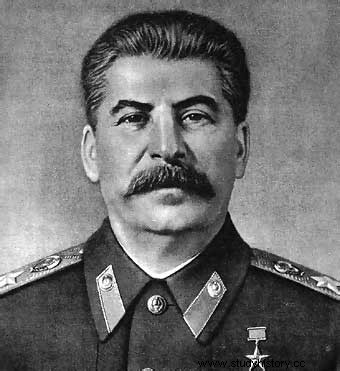Being two totally opposite patterns or models of behavior:genocidal, Stalin , and selfless hero, Alonso Pérez de Guzmán (Guzmán el Bueno).

Stalin

Guzmán offers his dagger
In both cases, faced with desperate situations on the part of their children, they acted the same.
Everyone knows the legend of Guzmán el Bueno in the defense of Tarifa (1294). Given the difficulty in taking the fortress by the Benimerines, they opted for the fast track:capturing Don Alonso's son and threatening to kill him if he did not surrender the plaza. Faced with Guzmán's refusal, he even tells the legend that he offered his own dagger, his son was killed but the plaza resisted. Hence the nickname “the Good «.
Joseph Stalin he was the leader of the USSR from the mid-20s until his death in 1953. He led the construction of socialism in the USSR, which turned from a rural country into an industrial power. In return, he led a repressive regime of the population, characterized by the presence of labor camps and repression ( gulag ) and deportations to Siberia. During the Battle of Smolensk (1941) the Nazis captured Stalin's son, Yakov. For a time he passed as just another soldier until he was recognized and the Nazi authorities proposed an exchange for Marshal Friedrich Paulus. Stalin refused the exchange claiming that his son had not been captured. Yakov died in a concentration camp.

Yakov in the Nazi camp
In honor of the truth, and because it annoys me to include Stalin and Don Alonso in the same post, I have to say that the genocide refusal was due to the fact that he did not consider that there were Russian prisoners, «only traitors who had allowed themselves to be captured «.
